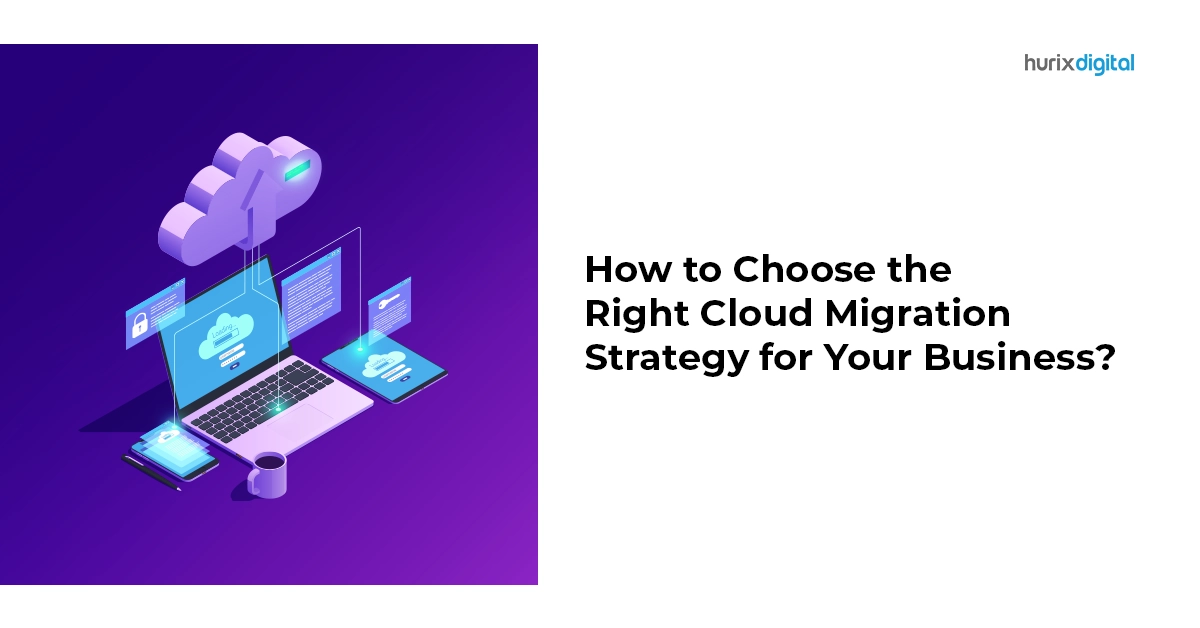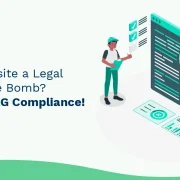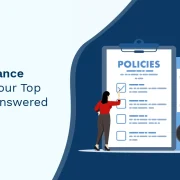
How to Choose the Right Cloud Migration Strategy for Your Business?
Summary
This article helps you understand the cloud migration process in full capacity. You will be able to understand the key factors that need to be considered before deploying a cloud migration strategy.
Cloud-centric models that leverage the flexibility and versatility of digital advancements are imperative for navigating the current business landscape. Now is the time to reinvent cloud systems and embrace the technology that makes your business agile.
Here is where cloud migration plays a significant role. In 2026, about 75% of businesses will adopt a digital transformation strategy, with the cloud as the main foundational platform.
Cloud migration is a complex process and requires careful consideration before you can fully leverage the benefits of cloud computing and the architectural framework. Let’s break down the cloud migration process to understand the intricacies involved better.
Table of Contents:
- Cloud Migration- Is It a One-Size-Fits-All Approach?
- 6 Major Types of Cloud Migration Strategies
- Cloud Migration- Steps Involved
- Key Takeaways
Cloud Migration- Is It a One-Size-Fits-All Approach?
Most enterprises are on the same page regarding benefitting from the impact of transferring data and applications to the cloud. However, it’s known that the process isn’t the same for all companies, and neither can you expect it to be a uniform approach.
Cloud migration strategies must be tailor-made depending on the unique needs and preferences of your work and the employees. You need to look at many factors before deploying a cloud migration model.
For example, if you’re searching for cloud migration consulting services, you must view the strategy in full capacity with a 360-degree comprehensive analysis. You should be fully aware of how much data and how many applications will be stored on the cloud. Hence, the migration process is related to how much information will be retained on the premises and how much will be stored externally to avoid redundancy.
Let us make the process simpler by asking a series of questions:
- What is the nature of your existing infrastructure- Is it scalable or not?
- Which type of cloud strategy will benefit your business operations the most?
- What is your disaster recovery plan, and how will you manage business continuity in the long term?
- What type of cloud service is better- multi-cloud (multiple cloud providers) or hybrid (a mixture of third-party services, on-the-premises, and private cloud)?
- How secure are the cloud platforms, and what will be the contingency plan in case of a data breach?
All of these questions will work as a starting point to know which cloud solution is ideal and the reasons for them.
Also Read: Cloud Migration: How Can Enterprises Benefit from a Successful Cloud Migration
6 Major Types of Cloud Migration Strategies
The cloud migration strategies are broadly categorized into six R’s:
| Type of cloud migration | Definition | Example |
| Rehosting, commonly called ‘lift and shift’ | This strategy involves changing the hosting provider or platform by moving the data and application from one platform to another. | Rehosting is an ideal choice if a third-party application is crucial for your business processes and incompatible with the existing infrastructure. |
| Replatforming | The process involves rebuilding and scaling the application to fit the needs of the new cloud provider and platform. | If you’re running a legacy CRM system and want it to be more efficient, you could rebuild it with a newer version of Microsoft Dynamics 365 so that you don’t have to update an entire platform whenever there’s a new version of Dynamics 365. |
| Repurchasing | The re-installation of all the data and applications on an existing platform or infrastructure. | If you are already running a fully-fledged IT infrastructure, repurchasing the same environment, with all of its applications and data, allows you to maintain a single source of truth for all of your business processes. |
| Refactoring | Here’s a major step in application development because instead of fixing issues, it involves rewriting the application code to make it more readable and flexible for maintenance. | Refactoring can be applied to entire projects or just individual classes. Many programmers prefer performing refactorings on their code rather than relying on automated tools. |
| Retiring | This step involves replacing the existing platform and data center, which will no longer operate. | If you want to retire your old hardware and software and start using the cloud instead, you can do so without major changes. |
| Retaining | This step includes retaining existing data and applications, which are essential to keep the business functional. | If you are migrating from EMC to Microsoft Azure, you will retain your existing data in EMC. You can then manage it using your familiar tools. |
Cloud Migration- Steps Involved
- Retiring legacy systems: This includes enterprise applications such as email, CRM, HR, finance systems, and custom software your business has built over time.
- Migrating user data: This can include any files or documents stored in a file share or on a server. It can also mean moving mailboxes across the network if you have an Exchange Server environment.
- Transfer from current to a new environment: The workloads are usually represented by virtual machines (VMs) that run applications and services for your business.
- Applying control standards and procedures: You must do this to effectively manage concerns like safeguards, emergency backup, and adherence to regulations.
- Final testing: User acceptance testing (UAT) is crucial for understanding whether the data and applications operate optimally and are functional on the new cloud platforms.
Also Read: The What, Why & How of AWS Cloud Migration
Key Takeaways
After laying all the necessary groundwork to facilitate the optimized cloud migration plan, the strategic points will only benefit you and your enterprise. Here’s what the roadmap of the plan assisted with application performance management will look like:
- Assess and observe the current environment
- Choose the type of cloud model
- Fulfill all the compliance requirements and security labels
- Measure the parameters to determine the success of the migration
Also, every cloud migration model and strategy has their own set of advantages and disadvantages, which you must factor in before making the choice and the corresponding actual application of the process. Hence, once you have everything in place, you can make an informed decision and choose the appropriate vendor.
Hurix Digital is a cloud-centric provider with a customized plan for all your needs and preferences. We simplify, scale, and secure your enterprise data and systems with future-ready cloud solutions. Get in touch with us to learn more about cloud models.

Vice President – Content Transformation at HurixDigital, based in Chennai. With nearly 20 years in digital content, he leads large-scale transformation and accessibility initiatives. A frequent presenter (e.g., London Book Fair 2025), Gokulnath drives AI-powered publishing solutions and inclusive content strategies for global clients





